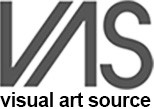L.A. ARTCORE PRESENTS
IN COLLABORATION WITH ART1307, NAPLES, ITALY
CARLA VIPARELLI, AMEDEO SANZONE,
NICOLA TORCOLI, MARIA GRAZIA ZANMARCHI
SEPTEMBER 3-28TH, 2014
Reception – Sunday Sept. 7TH
3 p.m. – 5 p.m. – Union Center
Conversation With The Artists Series: 4 p.m.
L.A. Artcore at Union Center for the Arts
LOS ANGELES, CA (July 16th, 2014) L.A. Artcore is pleased to bring this International Exchange Show between Art1307 of Naples, Italy and L.A. Artcore to its Union Center for the Arts space in Little Tokyo, Downtown Los Angeles. This will be the third of such collaborations, emphasizing Artcore's mission of producing exhibits that celebrate cultural diversity and internationalism. This month brings four artists that hail from Naples as well as Milan. Curators and directors Cinthia and Renato Penna are similarly invested in a kind of cultural exchange that extends itself to artists from all parts of the globe and continue to envision and carry out their mission of producing art exhibits of an international scope. '...within this context the association has strived to establish international exchanges with other cultural institutions abroad in order to offer artists and the public a much more vast and more varied scenario of contemporary art.' More info about Art1307 can be found at: http://www.art1307.com/eng/il-progetto.php For more info on L.A. Artcore's International Exchange Program, please visit http://laartcore.org/New_Website/special.html
Nicola Torcoli The art of Torcoli is built around three concepts: the theory of the philosopher Popper that 'All of the watches are clouds,' the simultaneity and the defragmentation. His works features with what in computer language is called “defrag”, defragmentation. Defragment operation compacts various gaps in contemporary art actuality, keeps the snippet as wealth and re-organize the idea itself of totality and/or ensemble. “Simultaneity”, hybridizations, a game of feasible joints between expressionism, cubism, futurism, orphism, industrial iconography and urban landscapes balanced out between abstraction and figuration, rationality and surreality, in which painting and its formal variables become assumption of polymateric buildings and assemblies. The artist is more charmed by the materiality rather than by the dematerialization of the artwork: Torcoli is omnivore of images and experiences, prone to experimentation of new techniques; he is an inexhaustible researcher of visual and tactile “seductions”…'
Amedeo Sanzone The subject of my research is the balance between the space, the object and the color. The function of the object is that of representing a physical reference in the void space surrounding it, to achieve awareness of the void of the reflecting and mirroring surface around. The monochromatic surface invites to start a journey among the many object reflected by it, to understand immediately after that we look without focus inside the black hole of our memory. The object on the surface has the function to allow us to take our fragile balance back. It is our consciousness, the depth of our soul; the space of the surface become the space of our existence, the place where to be alone, in front of our thoughts.'
Carla Viparelli’s art research displays characteristics that are beyond the scope of usual definitions. The selection of techniques, expressive media and tools ranges from oil on canvas and more traditional approaches, to innovative site-specific installation, where videos, performances and new digital technologies are used. New languages do not completely substitute, but integrate old ones. Painting thus becomes rational exercise, rather than autobiographical lyricism; she works with ideas, rather than with emotions. Through what could be defined as a conceptual epiphany, a notion is multiplied ad infinitum as if in a cosmic, kaleidoscopic vision, and undergoes many metamorphoses, thus revealing the inner union of things. It is a kind of game without limits, reaching from archetypes to everyday refrains, from the metaphysical to the ironic perception and to the linguistic displacement of ordinary meaning.'
Maria Grazia Zanmarchi I work rags, scraps of old fabrics or simply old , veils, yarn, old and worn-out curtains that have filtered the sunlight and were filters in themselves to look at the road and the sky; I work fabrics stretched over canvas or bare wooden frames. Hard and safe surfaces welcome the emotional paths tracked like stories. I tear pieces of tissue discovering warp and weft, a sort of construction lines. I mend these fragments of life working at the same time to my thoughts in an attempt, perhaps unnecessary, to understand them, mold them and immobilize them with glue or paste of chalk. The result are congealed surfaces, overlapping materials that do not hide what they cover. An “emergency” in the literal sense of necessity that cannot wait, irresistible desire to put in order and secure in a metaphorical image, something that may otherwise escape, blend and disappear.'


